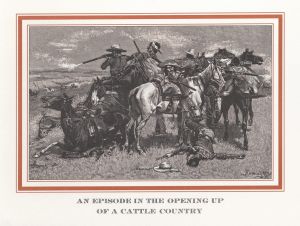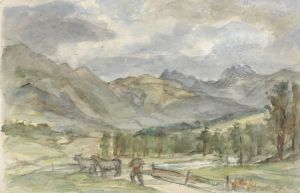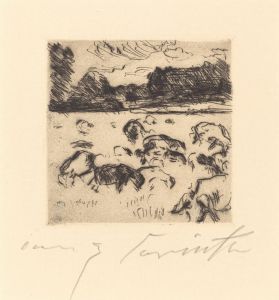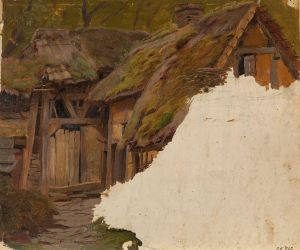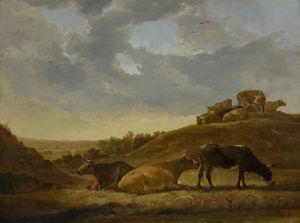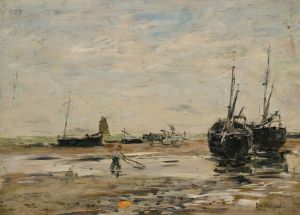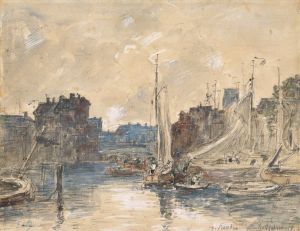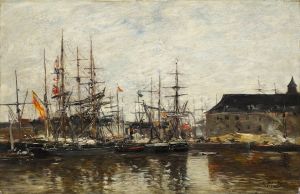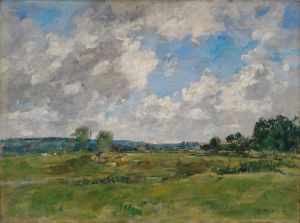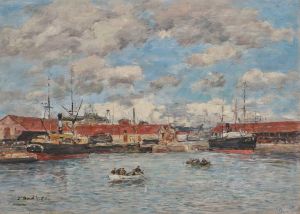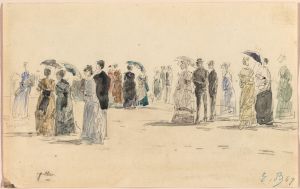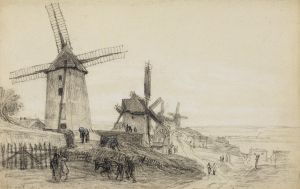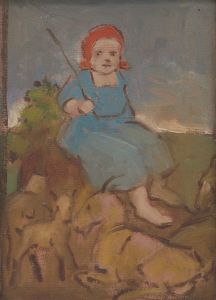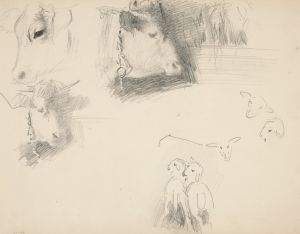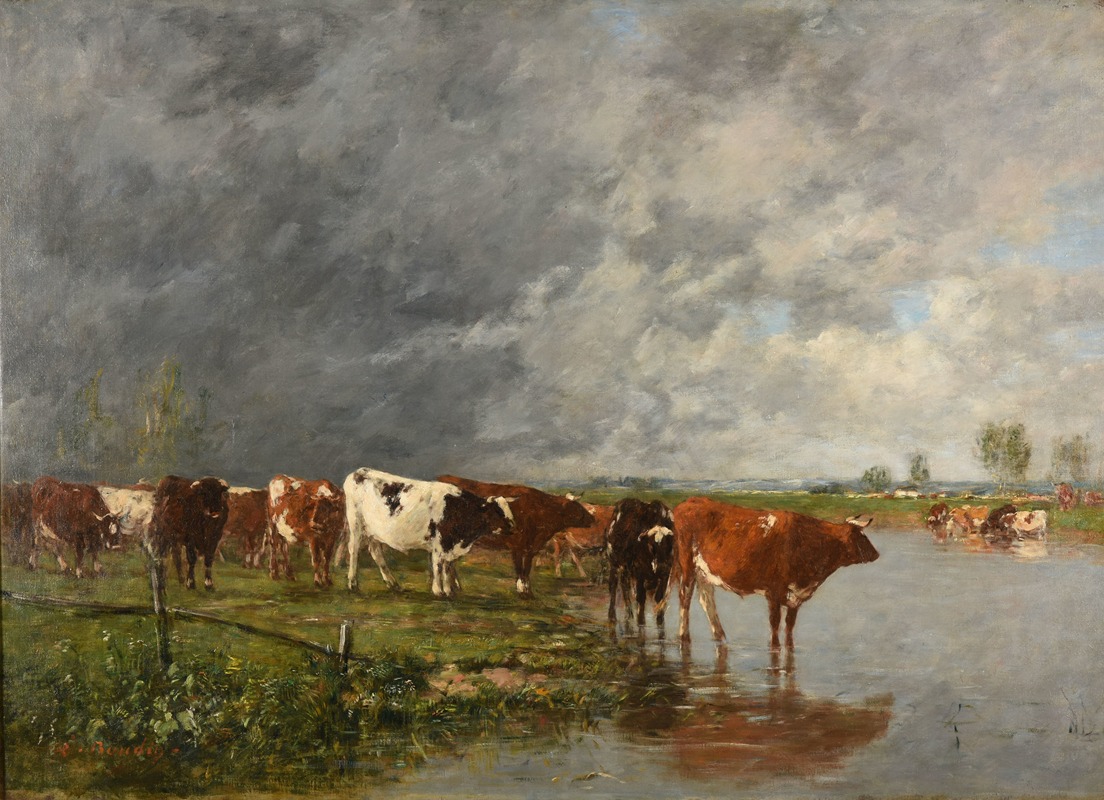
Troupeau s’abreuvant
A hand-painted replica of Eugène Boudin’s masterpiece Troupeau s’abreuvant, meticulously crafted by professional artists to capture the true essence of the original. Each piece is created with museum-quality canvas and rare mineral pigments, carefully painted by experienced artists with delicate brushstrokes and rich, layered colors to perfectly recreate the texture of the original artwork. Unlike machine-printed reproductions, this hand-painted version brings the painting to life, infused with the artist’s emotions and skill in every stroke. Whether for personal collection or home decoration, it instantly elevates the artistic atmosphere of any space.
Eugène Boudin's painting Troupeau s’abreuvant (translated as Herd Watering) is a work by the French artist who is widely regarded as one of the precursors of Impressionism. Boudin, born in 1824 in Honfleur, France, is best known for his depictions of coastal scenes, skies, and rural life, often capturing the interplay of light and atmosphere in his works. While specific details about the creation and history of Troupeau s’abreuvant are limited, the painting reflects Boudin's interest in rural landscapes and his ability to portray the natural world with sensitivity and realism.
The painting depicts a herd of animals, likely cows, gathered near a body of water, possibly a stream or pond, to drink. This subject matter aligns with Boudin's frequent focus on pastoral scenes and his interest in the daily lives of rural communities. The composition showcases his skill in rendering naturalistic details, such as the animals' forms and their interaction with the surrounding environment. Boudin's use of light and color in this work demonstrates his mastery of plein air painting, a technique he adopted early in his career and which later influenced the Impressionist movement.
Boudin's artistic career began in the mid-19th century, and he gained recognition for his ability to capture transient effects of light and weather. His works often featured scenes of Normandy's countryside and coastline, and he was particularly drawn to the skies, which he described as "the most moving aspect of nature." Although Troupeau s’abreuvant is less well-known than some of his other works, it exemplifies his dedication to portraying the beauty of ordinary moments in nature.
The painting is believed to have been created during the latter half of the 19th century, a period when Boudin was actively producing works that celebrated the simplicity and tranquility of rural life. His approach to art was deeply rooted in observation, and he often worked outdoors to capture the immediacy of the scenes he painted. This method influenced many younger artists of his time, including Claude Monet, who regarded Boudin as a mentor.
Today, Eugène Boudin's contributions to art are widely recognized, and his works are held in major museums and collections around the world. While specific information about the current location or provenance of Troupeau s’abreuvant is not readily available, the painting remains an example of Boudin's ability to find beauty in everyday rural scenes and his role in bridging the gap between traditional landscape painting and the innovations of Impressionism.





